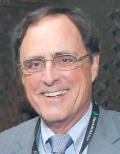FROM PEDIATRICS
For pediatricians to better help victims of human trafficking, it is critical that there be improvements in research, medical education, advocacy, and community collaborations, according to a policy statement issued by the American Academy of Pediatrics (AAP) Committee on Child Abuse and Neglect, Section on International Child Health.
The full effects of human trafficking are still very much hidden in shadows, leading the AAP to add human trafficking education to its list of top 10 priorities at the 2014 AAP Annual Leadership Forum.
The policy statement is the latest step in the AAP’s effort to involve medical professionals more heavily in combating child sex and labor trafficking, which the AAP asserts is a critical role for pediatricians. Even with the limited information available, the United Nations Office of Drugs and Crime 2016 report found 33% of the 40,000 trafficking victims reported were children, an indication of the vulnerability of younger populations.
“We wanted to give not just background information on trafficking, but we also wanted to give some guidance for academy members in regard to how we can increase awareness of human trafficking, how we can start to implement it into medical education for medical trainees and practicing pediatricians,” Nia Bodrick, MD, MPH, coauthor of the statement and a member of the AAP Section on International Child Health, said in an interview. “Due to the very narrow amount of evidence-based research that is available on this issue, there is a call to look more deeply into the topic.”
Currently, many health care professionals may be more exposed to child trafficking than they think because of a lack knowledge on how to recognize it. Victims can pass unnoticed.
“Most victims and survivors of human trafficking have had some sort of interaction with the health care setting at some point before they escape their situation,” said Dr. Bodrick. “So whether we as pediatricians realize it or not, we are more than likely interacting with young people who are in these situations.”
There are not enough data to list definitive characteristics of trafficking victims; however, there are certain signs associated with those who have been identified as victims so far. While history of neglect, homelessness, substance abuse, mental disorder, and identifying as a member of the LGBTQ community are more common among trafficking victims, many doctors are not equipped to handle confronting patients about the possibility of sex or labor trafficking, nor do they know what resources are available.
The AAP emphasized a need to expand the current scope of knowledge medical professionals have regarding such victims to create better, evidence-based care programs and protective policies.
An influx of information would help pediatricians understand the prevalence of trafficking, the extent of physical and emotional harm victims experience, and the effectiveness of psychological and mental health interventions, according to the statement (Pediatrics. 2017 November. doi: 10.1542/peds.2017-3138 ).
It also may help shed light on male trafficking victims, which Dr. Bodrick and coauthor Jordan Greenbaum, MD, of the Stephanie V. Blank Center for Safe and Healthy Children at Children’s Healthcare of Atlanta, assert are highly underrepresented.
Separating human trafficking from other types of violence and exploitation in the International Classification of Diseases codes may improve research initiatives, according to Dr. Bodrick.
There is also a need to delve deeper into the social determinants of health to better predict what makes victims more vulnerable.
While improving the number of studies on trafficking is essential, the results are more long term, which means in the mean time other actions can, and should, be made, according to the statement.
One of the best things pediatricians can do is gather as much knowledge on the topic as they can, according to Dr. Bodrick.
“For the average pediatrician, one of the first things one could do is educate oneself on the topic,” she explained. “Look for CME associated with your local AAP chapter or even on a national level online or even if you just have a couple hours for lunch, to become aware of what’s happening.”
The AAP also is encouraging physicians to advocate for legislative policies that will help improve victim care and to create partnerships within the community.
“In DC, in our local AAP chapter, we have opportunities to go to the Hill and advocate for bills, and while not everyone can do that, there are always local legislators that pediatricians can push to do more,” said Dr. Bodrick. “If you have a local paper, you could write an op-ed about the topic, you could educate your local schools about the topic by talking to the school board, or you could even engage in interviews on a local radio or television station.”
While many states have laws protecting victims of sex trafficking from being prosecuted for performing illegal acts, many have not passed such legislation.
Pediatricians can see what protections their states have through the National Conference of State Legislatures’ web page, as well as review current human trafficking laws.
Dr. Greenbaum and Dr. Bodrick reported no relevant financial disclosures.
ezimmerman@frontlinemedcom.com
On Twitter @eaztweets




